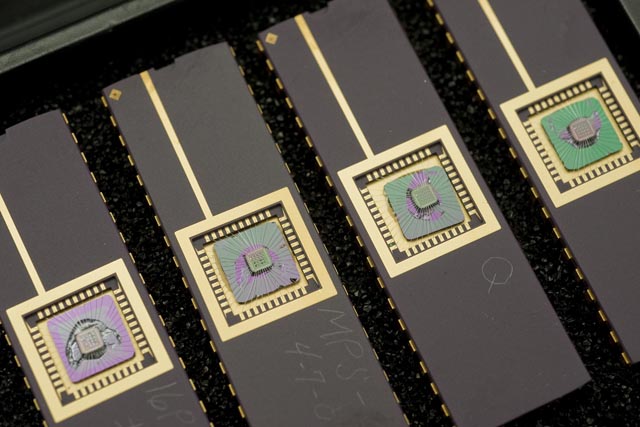Researchers from Ohio observed the changes in the electrical conductivity of nickel oxide that occur in response to the adsorption of toxic substances, originating from the air, on its surface.

Researchers from Ohio University in the USA have developed an innovative method for preparing tiny and extremely clean metal oxide nanoparticles. They use this simple, fast, and low-temperature method to make materials used in gas sensors that detect toxic industrial chemicals and even biological warfare agents. The research findings were recently published in the scientific journal Materials Chemistry and Physics.
Researcher Patricia Morris, professor of materials science and engineering at Ohio State University, leads a team of scientists who have developed solid materials capable of detecting toxic chemicals.
The challenge, she points out, is to develop a material that will react quickly and reliably with a variety of chemicals, including toxic industrial chemicals, and which will be integrated into sensors. "These are sensors that soldiers on the battlefield, or first aid providers for work accidents in factories will be able to activate," explains the researcher.
The material studied is nickel oxide, which has unusual electronic properties. Other laboratories are testing the same material for use in batteries, fuel cells, solar cells and even color-changing coatings. However, this research team is more interested in the changes in the material's electrical conductivity that occur in response to the adsorption of air-borne toxic substances onto its surface. A thin coating layer of the material can be inserted into microelectronic-mechanical systems (similar to computer chips), in order to locate and identify known toxic substances.
The idea works according to the same basic principle of another, much more familiar sensor called "nose". "The human nose uses signals originating from hundreds of thousands of sensory neurons to detect different chemicals," explains the researcher. "Here, we use a combination of electronic responses to identify the unique signature of a known toxic substance."
The key to the efficient operation of the sensor lies in the quality of the preparation of the nickel oxide particles. The research team developed an innovative synthesis method that produces very tiny particles - which provide the sensor with a very high surface area for adsorbing chemical particles from the air - and are very pure - which provide the sensor with a very high level of sensitivity. The size of each nickel oxide particle is the size of only fifty atoms - the equivalent of five nanometers.
The researcher describes the production method as follows: "Simply, you mix all the ingredients together in a pressure tank, put it in the oven, wash the material and it's ready to use."
Of course, for all of this to work smoothly, the researchers must reach specific and appropriate temperature and pressure conditions and leave the mixture in the oven for a precise amount of time. In this study they ran the oven to a temperature of 225 degrees Celsius for 12 to 24 hours. "A heating time that is too short - the nickel oxide will not form, a time that is too long - the oxide is redoxed to the original metal," explains the researcher. After removing the container from the oven, it is washed with an organic solvent (methyl ethyl ketone) to release the nanoparticles. At this point the material is ready for use. The other synthesis methods also require one more step - high temperature treatment.
In the next step, the researchers connected a layer of these nanoparticles to a micro-sensing array of a Zoran chip using a device known as a "picometric droplet spreader" in which each droplet is a trillionth of a liter in volume. The researcher describes the device as a kind of injection printer that places a drop of liquid containing the nanoparticles on the surface - in this case, the mold chips. According to the researchers, this is the first time that nickel oxide nanoparticles have been applied in this way.
However, for the researchers, the original and unique result of the research lies precisely in the first ever discovery of the reaction mechanism itself - that is, the various chemical steps that take place inside the furnace and the pressure tank during the synthesis of the material. Now, when the researchers understand the mechanism of the reaction, they can plan ways to introduce additives to the nanoparticles. Such additives could change the function of the sensor - for example, speed up the reaction time. The price of producing one gram of nickel oxide nanoparticle is five dollars; One chip has about four nanograms of the material, so the production price of each sensor is extremely low.
Additional applications of the material can be in emissions and pollution monitoring and air quality control.
The Ohio State University News
